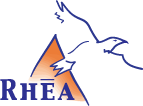
The Radon Technical Services at a federal facility required a significant amount of planning and coordination between base personnel and the project team. Coordination during the field effort allowed the devices to be deployed in accordance with the predetermined schedule.
Radon Technical Services
Historical Radon testing has identified various buildings at Naval Support Activity Bethesda (NSAB) with elevated radon levels above the Navy Radon Assessment and Mitigation Program action level of 4 picoCuries per Liter. AMS-Rhea joint venture was tasked by the Naval Facilities Engineering Command to conduct radon training and perform an assessment on all testable buildings within NSAB.
AMS-Rhea was tasked with performing a radon assessment within the nonresidential buildings at NSAB. These buildings include child development centers, barracks, commercial spaces, and administrative offices. The assessment included the placement of devices in all occupied, ground contact rooms for a total of one year. Duplicate devices were placed in all testing locations for quality control purposes. The testing devices were placed in areas with a low probability of disturbance using thumb tacks. When thumbs tacks could not be used, double sided tape or wire was used to place the testing device. A card was attached to each device that explained the purpose of the device and the expectations of the occupants during the testing period. The testing devices were locked in the “On” position using zip ties as a way to reduce the risk of tampering during the testing period. Upon deployment, the serial number, room location, device location, deployment date, and deployment time were recorded on log sheets. A training plan was developed as a way to educate NSAB professional staff and provide awareness information to building managers and occupants. The training plan consisted of a workshop, building-focused briefing sessions, building-focused awareness and outreach, and future training. The training plan was completed prior to device deployment.
All radon devices were deployed as scheduled throughout NSAB. The devices will be retrieved in approximately one year and sent to a laboratory for analysis.
Services: Environmental Services
Industries: Federal Government






